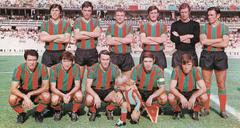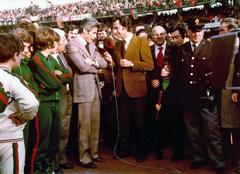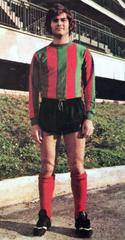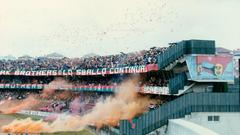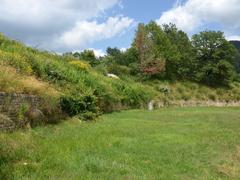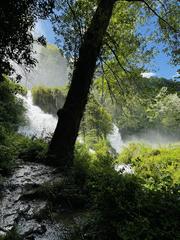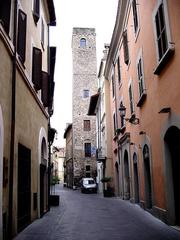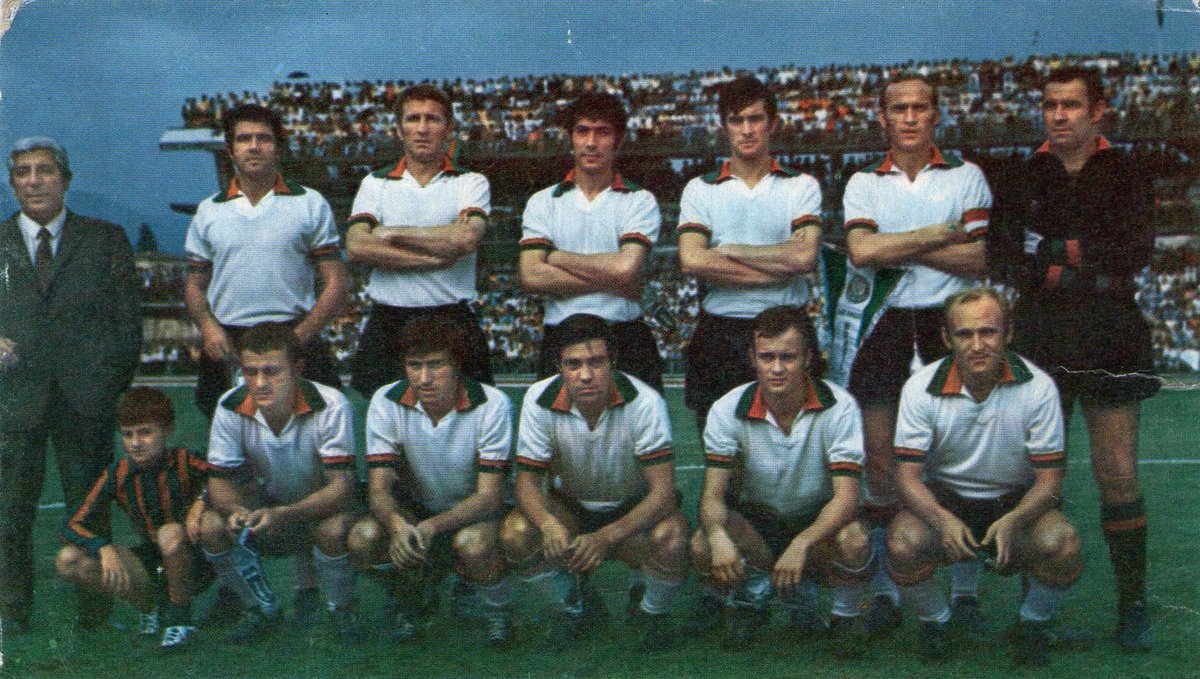
Stadio Libero Liberati Visiting Guide: Terni, Italy — Tickets, Hours, and Tips
Date: 14/06/2025
Introduction
Stadio Libero Liberati, located in Terni, Umbria, is far more than a football stadium. It is a symbol of the city’s sporting tradition, architectural evolution, and community pride. Since opening in 1969, the stadium has been home to Ternana Calcio and has become a central hub for sports, culture, and social events in the region. Named after world motorcycle champion Libero Liberati, the stadium stands as a testament to local heroes and the enduring spirit of Terni.
This guide provides a comprehensive overview of the stadium’s history, design, and significance, along with everything you need to know about visiting: hours, ticketing, accessibility, travel tips, nearby attractions, and insights on the stadium’s exciting redevelopment plans.
For in-depth background and current updates, consult resources like Parlando di Sport, Stadium Journey, and the official Ternana Calcio website.
Table of Contents
- Stadium Origins and Historical Background
- Architectural Evolution and Redevelopment
- Naming and Local Significance
- Sports and Cultural Impact
- Notable Events
- Visiting Information
- Nearby Attractions in Terni
- Future Vision and Redevelopment
- Practical Tips for Visitors
- FAQs
- Summary and Recommendations
- Sources and Further Reading
Stadium Origins and Historical Background
The need for a modern sports facility in Terni emerged in the early 1960s. Construction of Stadio Libero Liberati began in 1962 under engineer Leopoldo Baruchello, culminating in the stadium’s inauguration on August 24, 1969, with a friendly between Ternana Calcio and Palmeiras (Parlando di Sport, Stadium Journey). The stadium was named to honor Libero Liberati, a local motorcycle world champion who tragically died in 1962 (Parlando di Sport).
The original structure was considered one of Italy’s most modern, featuring uncovered seating in three distinctive elliptical rings and an initial capacity close to 40,000, reflecting the city’s ambition and the strong support for Ternana Calcio (Stadium Journey).
Architectural Evolution and Redevelopment
Initial Features
- Elliptical design by Baruchello, with three superimposed rings and unique curves lacking a central section
- Running track for multi-sport use, accommodating both athletics and football
- Capacity: Initially up to 40,000, later adapted for safety and comfort
Modern Upgrades
- In 1974, the Curva San Martino was added for visiting supporters, increasing the stadium’s vibrancy.
- Over the decades, capacity was reduced to approximately 14,400–17,460 (depending on configuration) to comply with Serie A and B regulations and enhance spectator comfort (Parlando di Sport, Football Tripper).
- The playing surface uses a modern hybrid Powergrass system.
- Recent upgrades have improved accessibility, seating, and amenities (Sporteimpianti).
Naming and Local Significance
Stadio Libero Liberati perpetuates the legacy of Terni-born Libero Liberati, 1957’s 500cc motorcycle world champion. His achievements brought international recognition to Terni, and the stadium’s name remains a source of immense pride. For fans of Ternana Calcio—the “Fere”—the stadium is a second home and a living symbol of identity and belonging (Stadium Journey).
Sports and Cultural Impact
- Home of Ternana Calcio: The stadium has witnessed the club’s historic promotions to Serie A in the 1970s and serves as the heart of Ternana’s passionate fan culture.
- National and International Matches: Hosted the Italian national team in the 1990s and high-profile club fixtures (Stadium Journey).
- Local Rivalries: The “Derby dell’Umbria” against Perugia is among the most anticipated events.
- Community Hub: Beyond football, the stadium hosts community gatherings and occasional non-sporting events.
Notable Events
- 1969: Inaugural match vs. Palmeiras
- 1970s: Ternana’s historic rise to Serie A (Parlando di Sport)
- 1991 & 1996: Italian national team matches (Stadium Journey)
- Ongoing: Cultural events and fan celebrations
Visiting Information
Visiting Hours
- Match Days: Gates open 90–120 minutes before kickoff.
- Non-Match Days: Guided tours are available by appointment or during special events; check the Ternana Calcio website for schedules.
Ticketing
- Buy tickets online at the official club website, via authorized agencies, or at the stadium box office.
- Prices range from €10–€40 depending on the match and seating.
- Discounts for children, seniors, families, and groups; bring valid ID as Italian stadium regulations require name matching (Calciomercato.it).
Accessibility
- Accessible entrances and dedicated seating are available.
- Ramps and elevators provide access to most areas, but some older sections may pose challenges—contact the club for assistance.
- Designated parking for visitors with disabilities is provided.
Getting There
- Address: Viale dello Stadio, 1, Terni
- By Car: Via A1/E45, exit at Terni Ovest and follow local signage.
- By Train: Terni station is about 20 minutes on foot or a short bus/taxi ride.
- By Bus: Lines E622, TR12, TR9, and TR10T serve the stadium area (Beneventonelpallone).
Stadium Facilities
- Modern seating, VIP lounges, press boxes, and hospitality suites in the main stand.
- General admission in the Curva Est, Curva Ovest, and Distinti.
- Food kiosks offering Italian snacks and refreshments (alcohol not sold inside).
- Restrooms are available in all sectors.
- No dedicated parking; street parking fills quickly—use public transport if possible.
Tours and Special Events
- Guided tours include the pitch, changing rooms, press areas, and trophy displays. Availability varies—check the official site.
- Occasional fan days and community events add to the stadium’s appeal.
Nearby Attractions in Terni
Combine your stadium visit with Terni’s historical and cultural gems:
- Cascata delle Marmore: Majestic waterfalls just outside the city.
- Terni Roman Amphitheater & Anfiteatro Fausto: Relics of the ancient Roman era.
- Basilica di San Valentino: Dedicated to the city’s patron saint.
- Terni Old Town: Charming streets, Umbrian cuisine, local shops, and lively atmosphere.
- Palazzo Spada & Cathedral of Terni: Architectural highlights nearby.
For detailed maps and attractions, see Trek Zone and Mapcarta.
Future Vision and Redevelopment
Redevelopment Plans
Major redevelopment is underway to modernize the stadium and enhance urban integration:
- Baldi Margheriti Associati Project: Reconstructs the stadium at street level, creates public plazas, and prioritizes pedestrian access. The new design will seat 18,037 (including 92 accessible seats) and offer a single, fully covered bowl (The Plan, Sporteimpianti).
- Sustainability: Use of prefabricated materials, green spaces, and energy-efficient solutions.
- Year-Round Venue: Addition of a club museum, retail spaces, clinic, and conference areas.
- Improved Accessibility: Street-level entrances, ramps, and independent sector facilities.
Practical Tips for Visitors
- Arrive Early: Secure parking and avoid queues.
- Use Public Transport: Especially for high-attendance matches.
- Weather: Most seating is uncovered—bring rain gear or sun protection.
- ID Required: For ticket purchase and entry.
- Cash/Card: Some kiosks may accept only cash.
- Club Colors: Wearing red and green is encouraged to join in the local spirit.
FAQs
Q: What are the visiting hours?
A: Gates open 90–120 minutes before matches; tours are by arrangement—check official schedules.
Q: How do I buy tickets?
A: Online, at authorized agencies, or at the stadium box office.
Q: Is the stadium accessible?
A: Yes, with ramps, elevators, and dedicated seating.
Q: Is there parking?
A: No dedicated lot; street parking nearby is limited.
Q: Are guided tours available?
A: Yes, by appointment or during the off-season.
Q: What else can I visit in Terni?
A: The Roman Amphitheater, Basilica di San Valentino, Palazzo Spada, and Cascata delle Marmore.
Summary and Recommendations
Stadio Libero Liberati is a pillar of Terni’s heritage, blending football passion, architectural innovation, and community pride. With ongoing redevelopment and a central role in the city’s cultural and sporting life, the stadium is a must-visit for fans and travelers alike. Plan ahead for tickets and tours, explore nearby historical sites, and immerse yourself in the vibrant atmosphere of the “Fere.”
For the latest updates, download the Audiala app, visit the official Ternana Calcio website, and consult comprehensive guides such as Sporteimpianti, Beneventonelpallone, and The Plan.
Sources and Further Reading
- Parlando di Sport, 2024: Modena FC - Lo Stadio Avversario: Alla Scoperta del Libero Liberati di Terni
- Stadium Journey: Stadio Libero Liberati
- The Plan: Reconstruction of Libero Liberati Stadium
- Sporteimpianti: Terni Città dello Sport - Stadio Libero Liberati
- Calciomercato.it: Stadio Ternana Libero Liberati di Terni
- Beneventonelpallone: Ternana - Stadio Libero Liberati

